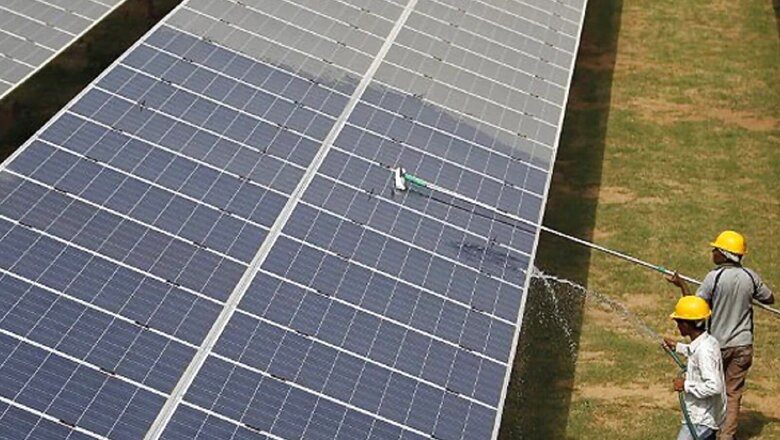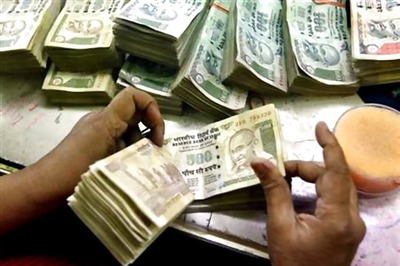
views
Having written about the exciting possibilities of the Reliance’s renewable energy push, every new detail revealed and every new acquisition just leads to more amazement over the breadth, scope and micro-detailing of these plans.
In the last 48 hours, Reliance has been on an acquisition spree of key technologies that indicates how well-thought-out the green energy plan actually is. India faces a unique problem set, which doesn’t allow for simple cut-and-paste solutions from abroad. Each technology has to be carefully vetted and conditioned for very different Indian environment and operating conditions.
For instance, when arriving in any major northern European city, you will find vast fields with windmills near airports. In Europe, the peak energy consumption is during winters (when appliances run in order to keep people warm)—and this is also the peak period for wind generation, which runs the windmills effectively, thereby matching demand and supply spike.
But in India, we don’t have these luxuries. While solar production peaks during the day, it is at night when air conditioners are turned on in peak summer. Finally, there is the issue of Indians essentially being extremely sensitive to price, unlike Europe where green energy is a moral and ideological imperative in spite of its high per unit price. This is compounded by the fact that close to $16 billion worth of energy is stolen every year with no recovery in sight.
To sum up, India faces four unique challenges that anyone venturing into the green energy space will have to deal with:
• The mismatch between peak energy harvest time and peak energy consumption time.
• Extremely challenging environmental conditions not suited for sensitive technologies, ranging from extremely high pollution levels to 50°C -plus heat and -40°C cold, not to mention the highest levels of rainfall in certain parts.
• A demand for high efficiency despite extreme price sensitivity.
• A volatile energy market where enforcing payment can be virtually impossible.
In addressing exactly this complicated problem set, the Reliance acquisitions and investments give us a blueprint of what exactly is planned, and how the unique Indian market and environmental conditions will be tackled.
The REC Solar Holdings’ (REC Group) technology for solar cells and panels are absolutely cutting-edge, significantly superior to the cut-price and low-quality Chinese panels available in the market. It is not that China cannot produce high-quality panels but China’s unique market is for products that are low-cost and require replacement within a few years—products suited to a middle-income economy with significantly higher disposable income than India.
This domestic Chinese market also syncs well with western, low-income consumption patterns. India clearly is different. The production philosophy that works in India (and yet seems impossible to achieve) is essentially Scandinavian quality at Chinese prices. This is exemplified by India’s moon mission at a fraction of the cost borne by other countries.
This is exactly what Reliance has set out to do, buying cutting-edge western technology and having an industrial plan to bring its cost down to Chinese prices. It is clearly planning to replicate this process across the entire spectrum, from production to consumption. This can be seen in Reliance New Energy Solar Limited acquiring 40 per cent stake in Sterling & Wilson Solar Ltd., which has executed solar turnkey projects globally.
Further, the Group has made sizeable investment in Ambri, a Massachusetts-based company specialising in clean batteries which are less corrosive, more environmentally sustainable, and can store energy for longer periods of time. It remains to be seen how far Ambri’s battery technology can be taken in terms of form factor and miniaturisation. Going by Reliance’s announcement, a battery manufacturing plant could also be in the pipeline.
This investment is particularly significant because it breaks the stranglehold that Chinese companies have on batteries due to low cost. Ultimately, if the potential of Ambri is realised, it could very well be miniaturised into car batteries, which are much safer than the lithium-ion batteries currently in vogue.
Cumulatively, these acquisitions seem to sort out the entire gamut of challenges the Indian market presents: the production-consumption time mismatch; the challenging environmental conditions and variations; creating extremely high-quality products for a price-sensitive market; and finally scalability that can withstand market volatility.
These announcements are literally a bright ray of sunshine in an otherwise smoggy climate.
Abhijit Iyer-Mitra is Senior Fellow at the Institute of Peace and Conflict Studies. The views expressed in this article are those of the author and do not represent the stand of this publication.
Read all the Latest News , Breaking News and IPL 2022 Live Updates here.




















Comments
0 comment